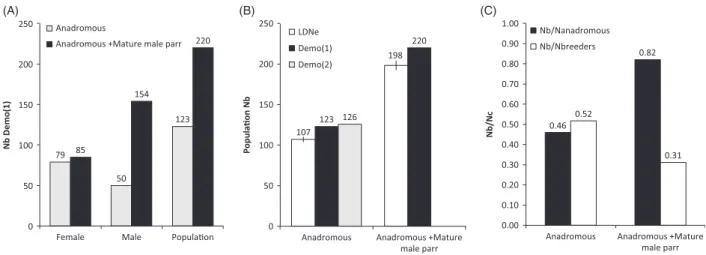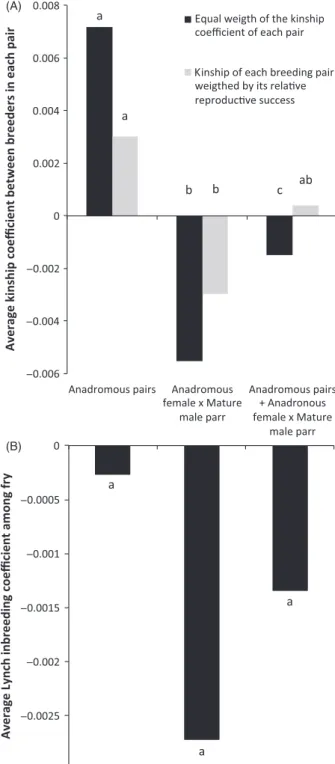Alternative reproductive tactics increase effective population size and decrease inbreeding in wild Atlantic salmon
Texte intégral
Figure




Documents relatifs
In the present work, an atlas of dience- phalic nuclei and a stereotaxic technique, using the PC as zero point, is described for Atlantic salmon (Salmo salar)
Salmon samples from 28 individuals at each location were collected in 2011 from five locations in the south- ern Baltic: in Poland, wild parr from the Slupia river (PS) and parr
ECs: endothelial cells; EPs: epithelial cells; GI: gastrointestinal; HE: haemaggluti- nin esterase; HPR0: putatively non-virulent variants of ISAV; HVI: highly virulent ISAV;
Previous studies showed the potential of selective breeding to increase n-3 LC-PUFA levels in salmon tissues, but knowledge on the genetic parameters for individual muscle fatty
We developed a life cycle model for Atlantic salmon (Salmo salar) that captures the population dynamics of all stock units from the European (7 stock units from France
Here we used 10-year pedigrees resolved for a wild orange clownfish population 49 from Kimbe Island (PNG) and a quantitative genetic linear mixed model approach to quantify the
Habitat preferences of Atlantic salmon parr are commonly described using mean flow velocity, water depth, and substrate as habitat variables, and a variety of habitat
Etienne Sacre, Editions Seuil, paris
